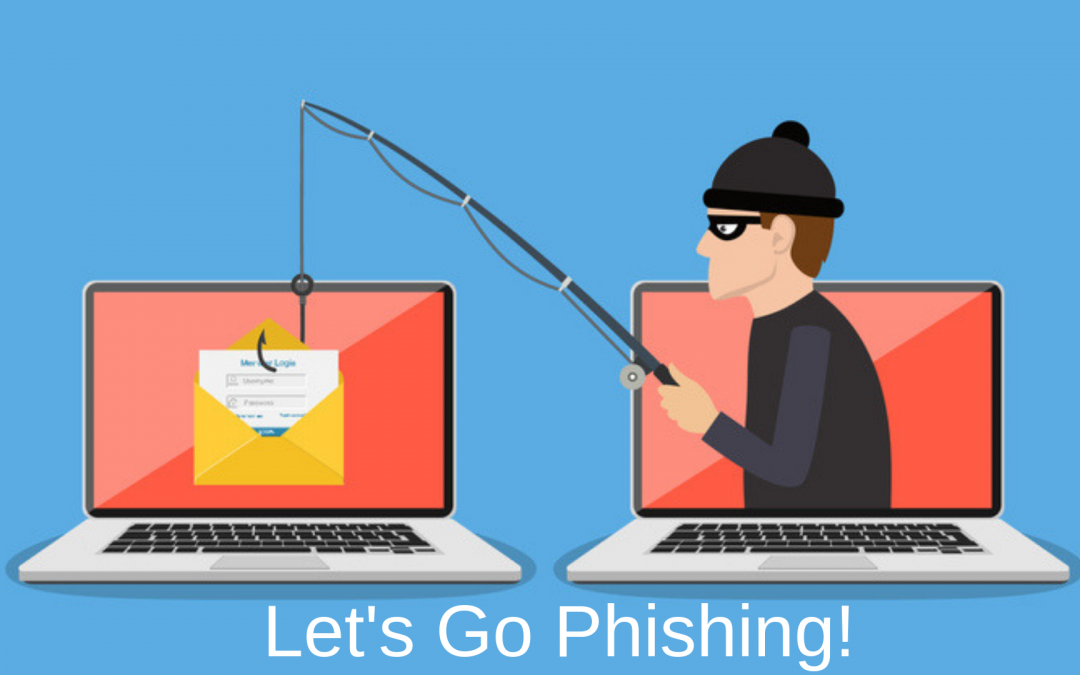
by Felicien | Dec 27, 2018 | Education
Not every internet scam needs sophisticated software to put into action. In fact, one of the most successful ones going on right now is incredibly simple in operation, while being quite sophisticated in its psychological tactics. It is the psychology of it that gets people to send the scammers money.
The concept of the latest scam is simple. The scammers send emails to potential targets telling them that their computer has had malware installed on it and that the malware has recorded them using online pornography. The email includes at least one of the target’s online passwords and tells them they will send the proof of their pornography use to their friends, families, and employers unless they send payment in Bitcoin.
It is the use of the passwords in the emails that makes this scam stand out from previous similar ones. These are passwords the targets have actually used, though may not be currently using. It is the inclusion of the passwords in the emails that make the targets believe they may genuinely have been hacked.
The Truth of the Scam
In truth, of course, no one has been hacked with the supposed malware. Instead, all the scammers have done is to gather passwords obtained in other data breaches, and use them. Many cybercrime experts believe the majority of passwords being used in this scam came from the 2012 LinkedIn data breach, in which 117 million passwords were stolen and sold on the dark web. Those who have been targeted by this scam often point out that the passwords they have been sent are old ones they have not used in a long time, making the proposed origin of these passwords a stronger possibility.
Though most people ignore emails like the ones the scammers have been sending, the addition of passwords the potential targets have actually used makes these emails far more psychologically effective. This is why the scammers have been able to extort so much money out of their targets with this scam.
Other Elements of the Scam that Make it Effective
Scammers are spoofing the intended targets’ email addresses, as well, making it seem as if the emails are coming from the targets’ own accounts. This is an additional psychological tactic that makes the scam quite effective with a lot of people. Thus far, people in 42 countries around the world have reported receiving the scam emails, and scammers have been able to collect around $4 million from their intended targets. Around one-third of the targets have been people in the United States.
It is easy to tell just how much Bitcoin scammers have been able to collect because most of it has been requested to be sent to one Bitcoin address: 1JsACYBoRCYkz7DSgyKurMyibbmHwcHbPd
Since Bitcoin addresses and the amounts in them are all publicly available and listed on the blockchain, it isn’t a mystery where the money is going. However, the anonymity of these Bitcoin addresses makes the owner of the address a mystery. The way the blockchain is set up, there is no sure way to find out the identity of the owner, either.
What to Do if You Receive One of These Emails
If you or someone at your company receives one of these emails, here is what you do:
Do not believe your computer has had malware installed on it.
Do not make any Bitcoin payments to anyone.
If you are still using the password that was sent to you in the email, change it.
Make sure you aren’t using any passwords that may have been exposed in a data breach.
Keep your passwords safe by using a password manager.
Do these things, and you need not to be concerned about becoming another victim of this online scam.

by Felicien | Dec 27, 2018 | Education
It is a scary fact that one out of every three business employees will open a phishing email at work on any given day. Phishing emails are created explicitly by hackers to try and convince you to give up pertinent information about your business or inadvertently make your data vulnerable. Therefore, it is critical that you know all you can as a business owner about email phishing practices. Take a look at some of what you should know about phishing emails, what they look like, and the steps you can take to protect your business.
A Closer Look at Phishing Emails
Phishing emails are specifically designed to trick users into revealing sensitive information. The emails most often look like they are coming from a legitimate sender and contain links that an unwitting user may click on. When these links are clicked, the user is led to a spoof website that is set up to appear as an authentic site. Once on the site, the user is asked to enter credentials, this could be login information, banking details, or other sensitive information. When the user performs these actions, the data given is captured by the spoof website system, and then later, the credentials can be used by the criminals to access real accounts.
A Look at Why Phishing Emails Are a Common Threat
According to a study done in 2017, there are a whopping 269 billion emails sent every day around the world. When you put that into perspective as a business owner, you see that this adds up to a lot of potential opportunities for criminals to attack your business through your employees. The APWG (Anti-Phishing Working Group) says that it is estimated that $9 billion will be leeched from companies and organizations through phishing in 2018.
Hackers who send out phishing emails either have the goal of stealing information and using it themselves or stealing the information to make a profit in another way. Sensitive financial data is often bought and sold on the Dark Web for a hefty sum.
The latest wave of phishing scams has shown up on social media sites like Facebook, Twitter, and Instagram. Direct links to spoof websites are created and proposed in a way to look legitimate, so users click on these links and believe they are being routed to legitimate websites.
Problems with phishing have become so prevalent that reports are gathered consistently to warn the public. APWG’s Phishing Activity Trends Report For The 1st Quarter Of 2018 stated:
263,538 phishing emails were detected
The number of phishing emails was up 46 percent from Q4 in 2017
At least a third of modern phishing websites had HTTPS and SSL certificates
Phishers are primarily posing as payment services, but they have also been known to target webmail services, financial institutions, cloud and file hosting sites, and other industries.
Most Prevalent Phishing Email Subject Lines in 2018
Phishers use phrases and terms in subject lines of their emails that would demand attention from just about any email user. The most common phishing subject lines in the second quarter of 2018 can be narrowed down to ten phrases.
1. Password Check Required
2. Security Alert
3. Email Deactivation Warning
4. Urgent Information for Employees
5. Update to Company Policies
6. Revised Policy Information for Employees
7. Staff Review
8. Mail Label Delivery
9. Change Your Password
10. Delivery Attempt Made
Even though these were the ten most common subject lines used, not all of them were effective at garnering clicks. “Password Check Required” accounted for about 15 percent of clicks. “Security Alert” was also at the top of the list of subject lines clicked with that phrase accounting for 12 percent of clicks. There were relatively the same (between 7 and 11 percent) amount of clicks on most of the other email subject lines.
Avoiding Phishing Scams in the Workplace
Train employees to understand HTTPS certifications do not always mean they are on a secure site
Instruct employees to alert someone immediately if they believe they have received a phishing email or have been fooled by a phishing email attached to a spoof site
Make sure all user passwords are complex and fully encrypted
Avoid clicking links in emails unless absolutely necessary, and you are certain the email is legitimate
Train employees on how to recognize a bogus phishing email
Employ the two-factor verification capabilities every time it is possible on a site
When it comes to phishing emails and scams, a little education will go a long way to protect your business from an attack. If you feel your business is being targeted by phishing emails, make sure you alert everyone in the workplace of the situation and work with your IT service to add extra security.

by Felicien | Dec 27, 2018 | Education
If you own or manage a small business, you’re undoubtedly concerned about how to keep your customers’ personal and your business’ proprietary and financial information secure. While you may not think that you have much to steal, since you are a small operation, a cyber thief misappropriating your customers’ credit card and bank account information could cause your business and its reputation to take a big hit. It’s not an exaggeration to say that such a breach has the potential to put you out of business. One surprising resource for tips on keeping your information safe is the U.S. Department of Homeland Security.
What you can learn from Homeland Security about cybersecurity
According to the U.S. Department of Homeland Security, nearly half of all small businesses will be the victim of cyber theft, and each incident costs the company an average of $9,000. This government agency has a wealth of information to help small and medium-sized businesses prevent such criminals from invading their computer databases. They offer a toolkit to help smaller enterprises assess their risk level as well as more than a dozen downloadable resources. They also provide a list of tips to help business owners and managers prevent cybercrime.
Tips for combating cyber theft
The Department of Homeland Security recommends that all businesses take at least these necessary precautions:
1. Install an anti-virus software program and update it regularly.
2. Make sure your WiFi network is secure by using a firewall and encryption software.
3. Set up company systems and procedures to keep sensitive information safe.
4. Educate your employees about how to keep data safe and then hold them accountable for any breaches.
5. Require that your employees create strong, unique passwords and that they change them often.
6. Spend a little money on data loss protection software. Use encryption to protect data you are sending out of your network, and use two-factor authentication, whenever possible.
7. Protect all of your website pages that are accessible to the public, not just the checkout or sign in pages.
To learn more about cybersecurity and how you can keep your company’s and your customers’ sensitive information protected from cybercriminals, give us a call at {phone} or send us an email at {email}. That way you don’t have to worry about remembering all of these tips; we’ll take care of it for you and allow you to concentrate on your customers.

by Felicien | Dec 27, 2018 | Education
Many business owners don’t realize that new laws are in place surrounding data breaches. On November 1st, 2018, these new laws went into effect for all Canadian business owners. These laws will affect thousands of businesses now, so it’s essential for all business owners to be aware of the changes and be prepared to comply. If these laws are not followed, businesses could be fined up to $100,000.
Breaches Must Be Reported to the Government
If you collect customer data such as banking information, legal or health info or such things as SIN’s, and your database is breached, you must report this to the government. The new law outlines reportable breaches like those that create “a real risk of significant harm to individuals.”
How Will These Changes Impact My Company?
You must report a breach like this to the Office of the Privacy Commissioner of Canada, along with the individuals who were affected. All those whose private legal, health or financial information was lost must be informed. They need to know precisely what information was lost, how many records were impacted and what caused the breach.
Companies must also show that they have taken the appropriate measures to prevent future breaches. If the prescribed steps are not followed correctly, the company can be heavily fined. In many cases, data breaches also damage the company’s reputation and affect consumer trust.
What Are The Specific Laws Changing?
This new law governing data breaches is not a stand-alone law. It’s an amendment to PIPEDA, the Canadian Personal Information and Electronic Documents Act. For a summary of Canada’s privacy laws, please visit here. The specific laws related to digital information can be found here. It’s important to understand and comply with both.
Many experts have pointed out that the wording in PIPEDA does leave room for interpretation. It covers situations where “…it is reasonable in the circumstances to believe that the breach creates a real risk of significant harm to the individual.” This wording is somewhat vague and may be interpreted in various ways by the Canadian courts.
Steps to Follow If There’s A Breach
Below, is a brief outline of the steps to follow if you experience a breach:
The nature of the breach and what specific data was stolen
What your organization has done to reduce risk and harm
How those affected can protect themselves and reduce their risk
Information about the organization’s contact information
The procedure for filing complaints
How Did the Breach Occur?
Once the source of the breach has been identified, the vulnerabilities must be repaired. Some breaches occur due to employee carelessness. Perhaps an employee clicked on a link in a phishing email. With so many workers now using their own devices, this opens the door to breaches if a device is lost or stolen. The way to handle this issue is with a Remote Management and Monitoring (RMM) program. This can be set up and managed by {company}. This offers multiple benefits including:
Compliance to regulations
Remote wipe if a device is lost or stolen
Find my device technology
Application management such as updates and patches
{company} can monitor and manage all your technology on a 24/7 basis. With Managed IT Services you can prevent downtime and keep your technology running smoothly. We can notify you of areas where we believe your database might be at risk and suggest ways to repair this vulnerability.
Other Ways to Mitigate Vulnerabilities
Having data stored and managed in the cloud is a good method of decreasing your company’s liabilities. The cloud offers many benefits including better security, scalability, plus it’s flexible and allows your workforce to be mobile.
How To Protect Your Data From Intrusion
With hackers around the world now scaling up their attacks, businesses must be thoroughly prepared. Simple firewalls and antivirus software are no longer enough. Most security experts recommend a layered approach to security. Follow these guidelines to protect your data from future data breaches:
Policies-Create and enforce security policies for your company.
People-Make sure your employees know what a phishing email looks like. Most workers need periodic regular training in this area, so they don’t get careless.
Technology-Make sure you have the right technologies in place to prevent a cyber-attack from occurring in the first place.
In Conclusion
Canadians want to know how their personal information is being used. And they have a right to know what information is being collected and how it’s being used. In the future, these laws will most likely get even more strict for several reasons. Data breaches cost companies around the world billions of dollars each year. Cyber thieves are becoming more and more clever. They have fine-tuned their approach and figured out how to get people to open phishing emails. They can mimic the look of major companies like Spotify, Paypal, Apple and Microsoft. Ransomware scams have been highly successful and hackers are often able to earn thousands of dollars per day by taking over a company’s database and then threatening to destroy all the information unless a ransom is paid.
What Can You Do?
There are numerous ways to protect your data from a breach. {company} can help you assess your current security protocols and create stronger measures. We can also advise you on how to proceed if a data breach has already occurred. It’s essential to determine exactly what happened and notify those affected along with Canadian authorities as quickly as possible. By waiting, you risk hefty fines and your company’s reputation could be ruined.
Things like Proactive Monitoring can help. We will continually scan and track the stability and security of your IT system for maximum uptime identifying any security issues.

by Felicien | Dec 26, 2018 | Education
The new year is already upon us, but it is not too late to put together a solid, sensible information technology plan for 2019. Strategic planning in all areas of operation—including technology—helps organizations budget for and efficiently manage day-to-day requirements while investing in long-term projects and solutions.
As your business evolves, so will it’s IT requirements. Likewise, as technology advances, your company will also have to adapt to stay viable and competitive. For 2019, your top concerns regarding technology likely will include:
Upgrading software
Making data and systems more secure
Preparing for structural changes
Responding to threats and emergencies
Supporting business growth—locally, nationally, and/or globally
A vigorous technology plan should address these concerns, as well as those unique to your business and industry, and provide a framework to guide IT-related decision-making, prioritization, and task-implementation. If you have not yet started, here are a few ideas for how you can start putting together a robust technology plan to support the success of your company in 2019.
What should a technology plan account for?
Anticipated changes within your company may impact what items are necessary for your strategic technology plan to address for 2019 and the years beyond. Having a clear picture of where your company or organization is headed will help make it easier for you and other members of the IT team to determine which new technologies and upgrades are necessary and/or preferable for your specific business strategy. For instance, you should consider whether your organization plans to add or eliminate a notable number of employees within the fiscal year. Another question to address: Are you are planning to acquire any additional companies or provide new products or services? All these considerations will factor into your technology requirements. As you determine which new software, hardware or other IT solutions you may need in 2019, make sure they will integrate well with your existing IT environment.
Additionally, your technology plan should include arrangements for support services, including installation, maintenance, upgrading, and troubleshooting. Most business operations for companies across a range of industries are severely limited when technical issues arise, making it vital for you to preempt possible IT disruptions and have a plan for dealing with them.
How can companies deal with IT security threats?
It is common knowledge that cyber-security threats are continually evolving, along with the IT defenses needed to prevent and mitigate the risk. According to the Information Security Forum, an independent research organization, companies should stay well-informed about emerging technologies and corresponding threats to position themselves to make the best business decisions.
Information Security Forum’s Threat Horizon for 2019 reports on nine major threats that companies should expect to face in earnest over the coming year or two.
The first category of threats pertains to disruption from an over-reliance on fragile connectivity. The cyber-security threats in this category include:
Premeditated Internet outages
Hijacking from ransomware
Privileged insiders aiding in cyber-attacks
The second category covered by the Information Security Forum’s report deal with distortion, which occurs when trust in the integrity of information is lost. The risks in this category include:
Automated misinformation gaining undue credibility
Falsified information compromising performance
Subverted blockchains
In the third and final category are threats that have to do with deterioration, or controls eroding because of regulations and technology. These threats include:
Surveillance laws exposing corporate secrets
Privacy regulations impeding how organizations monitor insider threats
Overly enthusiastic deployment of AI (artificial intelligence) leading to unexpected outcomes
The proliferation of smartphones, tablets and other mobile devices being used in professional environments only increases the amount and varies the types of cyber-security risks that companies face. As a business of any size, your goal should be to protect your systems and networks from data loss or malicious attacks, both internal and external.
Should you invest in Cloud technology?
Compelled by factors such as profitability, efficiency, and gaining a competitive advantage, about 71 percent of small-to-medium-sized businesses (SMBs) intend to increase their investment in cloud-based technologies in 2019, according to survey data from Bill.com, a company that creates digital business payment solutions. The three primary areas for anticipated investment, according to respondents, include marketing software, sales software, and payments software. Cloud computing allows for streamlined operations, connected through a sort of virtual office accessible to employees and clients. While it comes with some risks, especially about privacy and security, cloud technology is definitely trending for the capabilities it provides, such as flexibility, potentially lower IT costs, collaboration efficiency, access to automatic updates, and business continuity.
Bill.com’s Chief Marketing Officer Yael Zheng reportedly stated, “These businesses are now developing a clear understanding of how technology can help them streamline processes and ultimately power business growth, which I anticipate will lead to even more investment in the future.”
As you put together and implement a technology plan for 2019, consider whether further embracing and investing in cloud-based technologies can help propel the growth of your business.
What changes are coming to Windows?
Beware: Jan. 14, 2020, is an essential date for Microsoft users for a couple of reasons. At that time, Microsoft will end support for Windows 7 software systems, as well as Windows Server 2008 and 2008 RS. If you have not already formulated a plan to upgrade to Windows 10 systems and new server technologies, 2019 is your opportunity to do so. Microsoft’s options for new server systems include upgrading to Windows Server 2016 or migrating your company’s workloads to Azure. Replacing outdated software and server systems is critical to protecting your infrastructure, applications and information. Even as early as April, your outdated Microsoft system may not receive critical security fixes, as new systems are moving over the to the more secure SHA-2 algorithm in the future. Keep in mind this transition may take some time, making it imperative to start the process sooner rather than later.
Is technology planning an easy goal to accomplish?
As the year progresses, you may have to work with IT consultants and other department heads within your company to update or tweak your technology plan to address unexpected costs and events or to take advantage of current opportunities in the marketplace. Once you start a project outlined in your plan, you may also have to adjust cost estimates or deadlines to have a more realistic framework to guide progress. Just because adjustments might need to be made down the road, however, that does not negate the prudence and benefits of engaging in a formal strategic planning process at the start of the year. Doing so can help you optimize IT spending and proactively invest for the future, creating a culture of continuous improvement rather than merely trying to stay on top of day-to-day technology needs.
From the get-go, and along the way, your organization should take advantage of the knowledge and expertise of IT consultants and advisors who are more well-versed on current market trends, innovative technologies, and emerging cyber-security threats.




